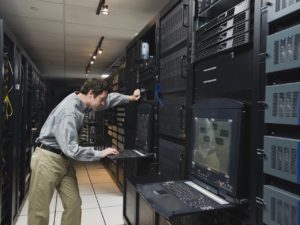“The power just went out and I didn’t save that last document!” Does this sound familiar? We live in a world that is increasingly reliant on energy – global electricity demand will double by 2030 and energy demand in general by 2050.
And where is this energy being consumed? The short answer is the built environment (~65%) – industry, residential, tertiary buildings – and transportation (~ 30%). The populations of urban centers are increasing around the world; in 2050, 2 out of 3 people will live in a city, meaning that there needs to be a spotlight on where people live and work, as well as how they transport themselves and the commodities they depend on.
Since the majority of energy usage is by the built environment, the focus on energy management and smarter consumption becomes increasingly more obvious when you learn how much energy is lost when transmitting it from where it is generated to where it is consumed; for every 1 unit of energy conserved at the point of use, 3 units become available at the point of generation. Implementing existing energy efficiency solutions as well as conservation programs and initiatives, individuals could realize tremendous savings at home while opening doors to potentially transmit energy to other areas where it is needed.
At the same time aging electrical infrastructures around the world are making it difficult for energy consumers, both large and small, to evolve from passive to active consumers of energy. The next generation of electrical grid, the smart grid, relies on intelligent energy technologies that are available today. These technologies provide visibility to a commodity that is usually invisible to consumers until the lights go out. Accumulating data about energy transmission, distribution and consumption and then serving up the relevant information to the appropriate people empowers them to make intelligent energy decisions. The proper information to utilities gives them the insight they need to provide the right energy to their customers at the right time as well as enables them to control and manage consumption for a fully adaptable grid. This provides the foundation for consumers to reduce energy usage, lower costs, continuously improve, and facilitate a more sustainable workspace and home.
Transportation is a daily routine for most individuals. The more efficient an individual is about their commute, the more time they have to spend elsewhere. A transit-oriented development (TOD) is a mixed-use residential or commercial area that is designed to optimize access to public transportation and incorporates features to encourage transit ridership. An urban design that aims to make public transport easily accessible, cheaper and quicker than driving your own vehicle will result in more individuals using transport options that are less resource intensive like buses and train systems. Having attended GLOBE 2012 in Vancouver, BC, the Canada Line and SkyTrain LRT systems were constantly cited as success stories contributing to TOD in the host city. Both LRT systems report high ridership levels and the communities surrounding stations have seen millions of dollars in development and investment.
An additional piece of the smart transportation puzzle is the adoption of Electric Vehicles. With approximately three million electric vehicles (EVs) and plug-in hybrid electric vehicles (PHEVs) expected to hit the road globally by 2015, the development and integration of EV charging infrastructure needs to a part of the discussion when planning for a sustainable future.
However, the Holy Grail of urban habitat development is when the built environment, electrical grid and transportation are integrated to form a smart city. Once the behaviors of these complex and inter-connected systems are visible and understood, they result in tremendous cross-functional efficiencies, cost-savings and a healthier more enjoyable place to live and work.
While the deployment of these ‘smart systems’ depend on technology that is available today; communication and education are equally important. Utilities, cities, and organizations large and small need to play an active role in engaging communities and highlighting the shared benefits members of society will receive from an intelligent urban habitat. Whether it’s energy cost savings, shorter commuting times, healthier living spaces, or all of the above, the key is to be able to communicate these benefits concisely and in a way that the audience can relate to.
Everyone, from the highly versed experts to the general public, plays an important role on the societal team. Working together, sharing successes and learning from challenges will benefit everyone and catalyze the movement towards a future of intelligent energy prosperity.



